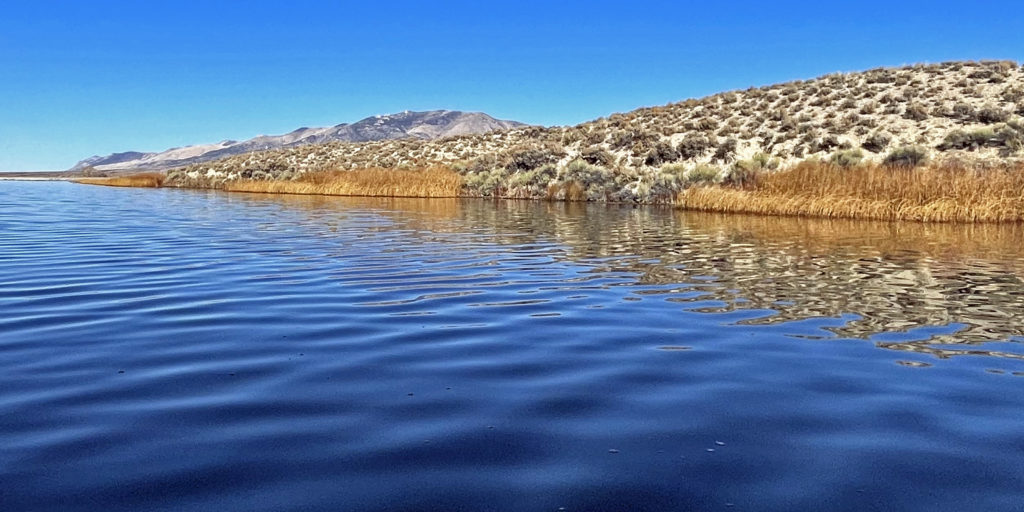
As autumn strengthened its grip, I perceived there was time for one more angling trip before I laid up the fly gear and prepared for the winter. Yes, even Las Vegas has a winter season, albeit nothing like the northern half of the United States. Regardless of the Vegas winters, for southern Nevada trout anglers the better fishing is farther north at elevations of 6,000 feet and higher. Comins Lake, for example, sits at 6,545 feet just seven miles east of Ely, Nevada. At those elevations farther north the lakes and reservoirs freeze over in the winter, and it does snow in that part of Nevada. By geographical measures, Ely, Nevada is 1,190 feet higher in elevation and just 0° 20´ in lower latitude as compared to Denver, Colorado, so Ely and Denver are comparable geographically but for the massive Rocky Mountains to the west of Denver.
As to the fishing on Comins this Thursday, it was the slowest I have ever experienced on that lake. It did not surprise me, but I admit to being mildly disappointed. The butter-brown colored trout I fooled on Comins in May 2019 was my personal proof that really nice Brown trout could be found in Comins Lake (Comins is primarily a Rainbow trout fishery). I resolved to fish Comins this fall because I had never fished it that late into the year, but also because I hoped to hook another male Brown trout that was aggressively into his fall spawning cycle. I launched the tube into the water around 11:30am, but I failed to detect even the slightest strike for the next three hours. For you interested anglers, I began with an olive Bugger but eventually switched to a black Leech fly pattern on my Sweetgrass bamboo fly rod and 5-weight sinking line.
The Nevada Department of Wildlife website indicated that 8,246 Rainbow trout, averaging slightly over nine inches in length, were stocked in Comins just two weeks ago. They say the trout growth rates in Comins are about two inches, plus or minus, per month. If that were true, by May of next year the healthiest planted trout might reach 20 inches. My skeptical nature and actual experience say the growth rate is closer to one inch than two – 14 to 16 inch trout are plentiful in the spring with a decent smattering of fish around 20 inches. Regardless of the actual growth rate and my spring catches of trout 14 to 20 inches, I thought I surely would have hooked a couple of the recently planted Rainbows… but no. It may be that the larger Bugger and Leech flies were not on the menu for the new hatchery trout. Still, I would have thought one or two of them would have attacked my fly just by basic animal instinct.
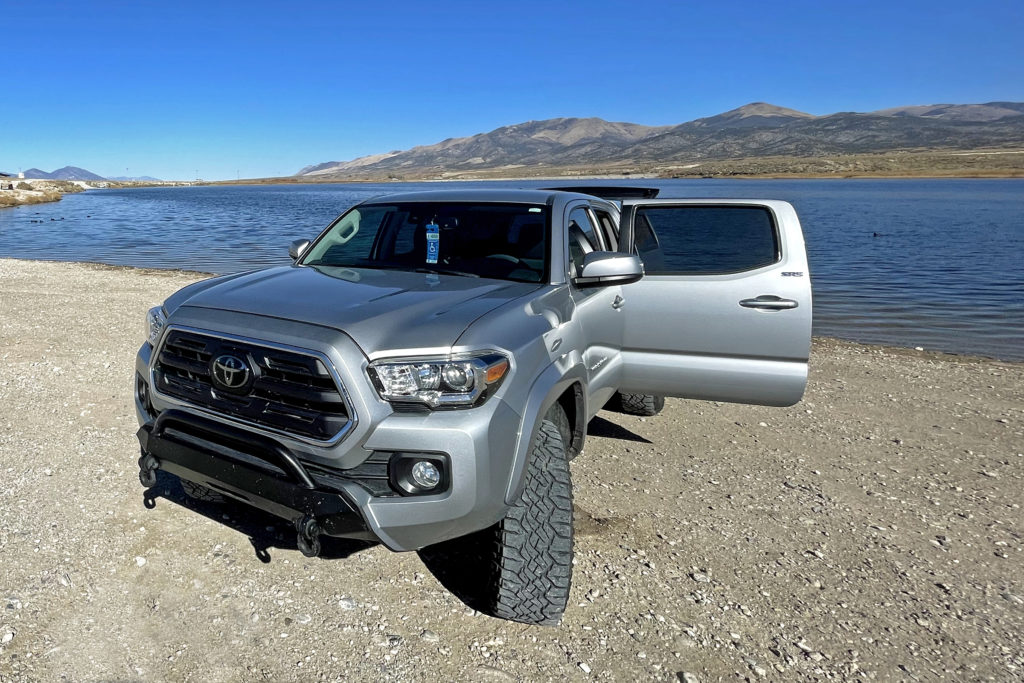
The lack of activity for three hours had dulled my senses. I began to daydream of other things. My aching cold feet and fingers became more noticeable. I was distracted. I was pulled back to the reality of fishing around 2:30pm when I detected a soft bump, so soft I almost failed to set the hook. The take was at least three feet down the water column. The fish’s response to the hook set seemed as dull as mine, and once I realized I had the fish on I sized it to be 13 to 14 inches based on the soft strike and lack of head shaking. Once I got him to the surface, I was surprised to see a heavy and thick Rainbow trout, and I recalibrated my estimate to about 18 inches and a few pounds, possibly three pounds.
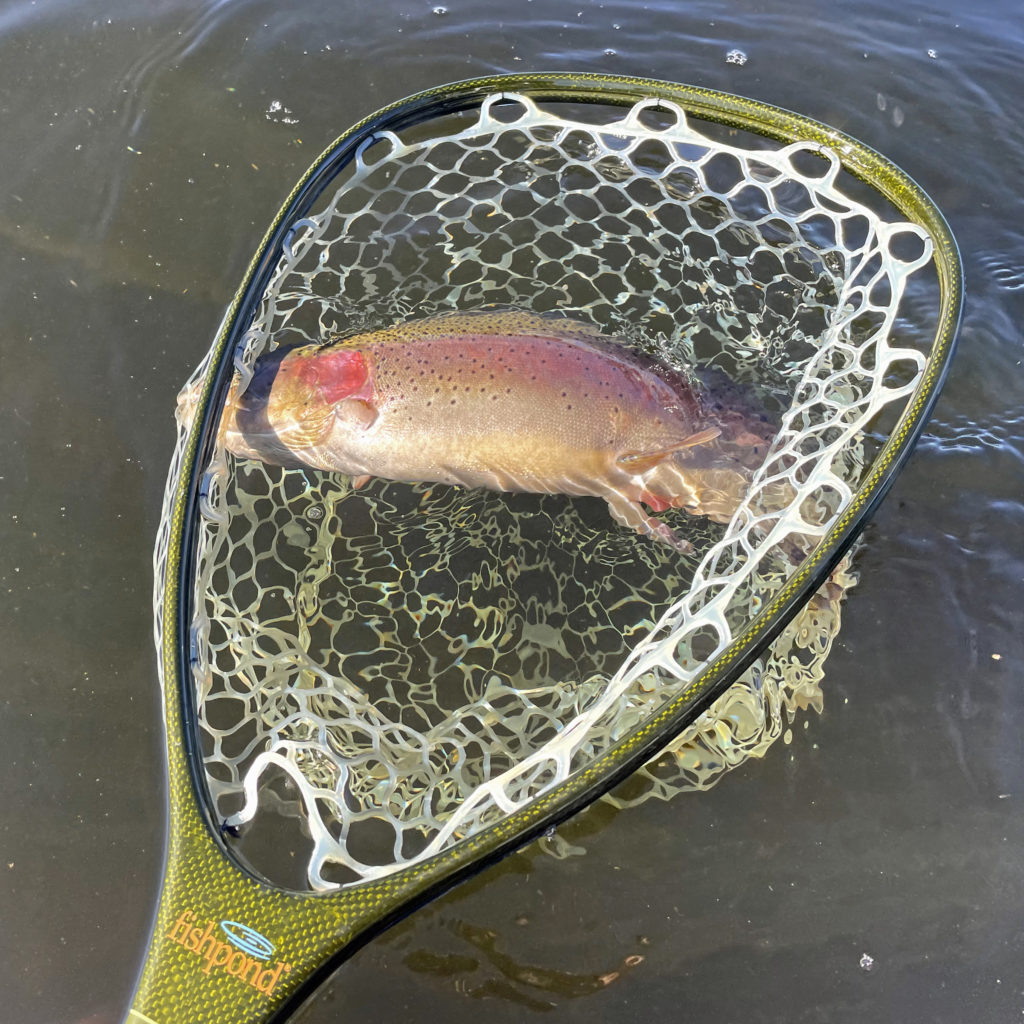
One bite over four hours fishing Comins resulted in one fine trout scooped into my large Fishpond Nomad mid-length net (the perfect net for float tube anglers, in my opinion).
Neglectfully, I left my water-proof Canon camera in the cab of the truck, so these photos all came from my iPhone. To make matters worse, since I intended to use the tethered Canon camera, I left my iPhone tether at home. Not only that, but the drag on my Hardy L.R.H. Lightweight reel is but a weak click-pawl mechanism that predates the use of a palming spool rim that can supplement the click-pawl braking. For you non-fly anglers, if your reel has a palming spool, you need to use both hands to play strong fish. One hand to hold the rod grip handle and another to apply sufficient pressure against the reel spool rim. The spool pressure creates the resistance to tire the fish; just be careful not to abruptly stop the reel from too much pressure causing the fish to break off. Once the fish is tired enough and near the surface, the hand used to palm the spool can be reassigned to reel in the line until the fish is close enough to scoop into the landing net. So, with two hands playing a large, hard fighting fish, you would need a third hand to hold the iPhone while focusing and clicking the photos. Since my Hardy does not have a palming spool, I had to hold the line in my left hand so that I could attempt to control the trout’s runs by squeezing the line with varying pressure. Eventually my left hand could strip the line in through my rod hand until the fish was close enough to net. Because of the trout’s size and my “old-school” equipment, once the fish was close enough for photographing, I held the line and rod in my right hand while typing my phone’s passcode and operating the camera application with my left hand. I did not want to lose the fish before I got it into the net, but I surely did not want to lose my Sweetgrass “boo rod” with the Hardy reel or my iPhone to the full depth of the lake. I was closer to losing both simultaneously than I like to admit.
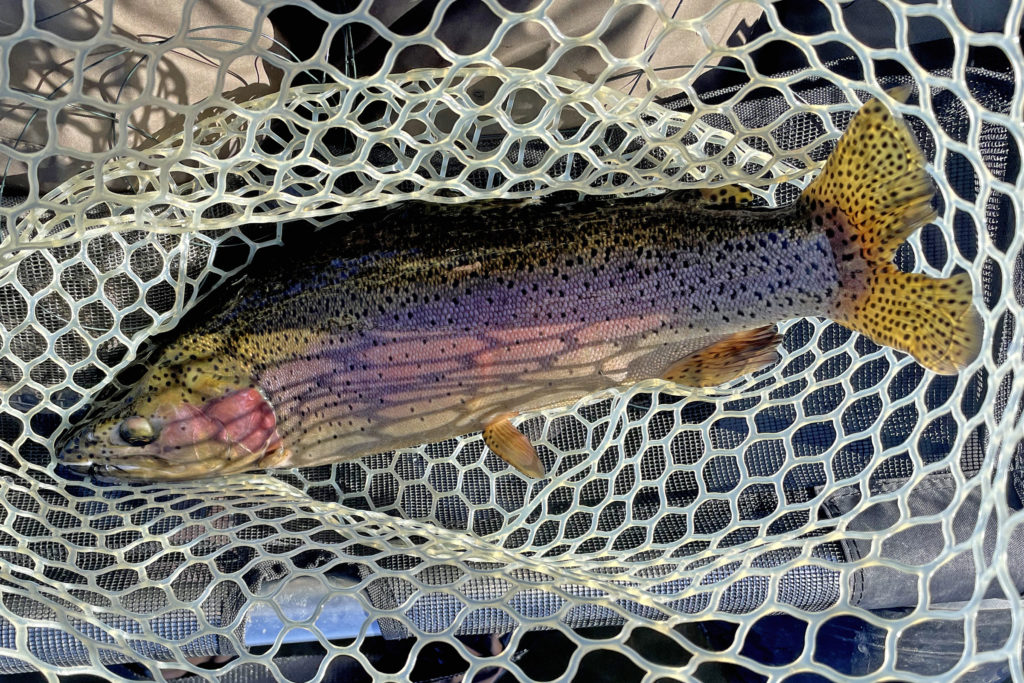
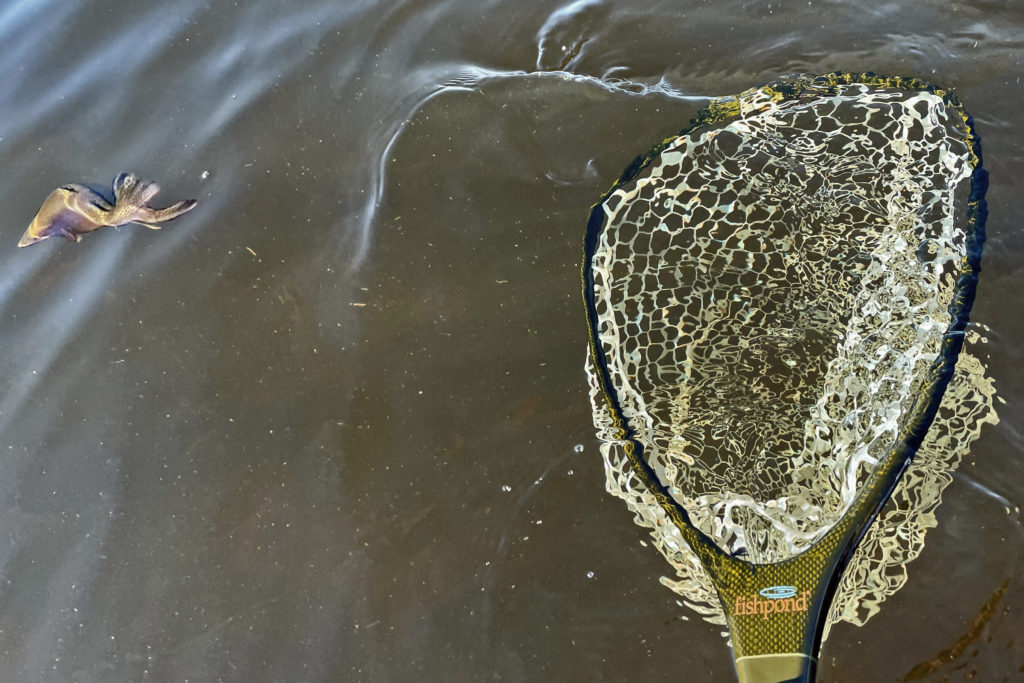
A Book Review
Eleven Christmases ago my son Nick gave me a book titled Astream: American Writers on Fly Fishing. It is a collection of short stories from 30 different writers, including five women. Despite its title, while the stories in this collection do involve fly fishing, they are not necessarily about fly fishing. In other words, you do not need to know about fly fishing, or even angling in general, to enjoy the authors’ personal stories about the interpersonal connections they developed with friends and family through the art and sport of fly angling. As my thoughts began to accept the winter trout angling hiatus, I began perusing my angling library and rediscovered “Astream.”
One story, “Why I Fish,” was by Kim Barnes whose 1960s youth was spent in the forests of Idaho. Her whole extended family were “nomadic, itinerant” loggers who lived in Pole Camps which they could relocate near the next logging forest. Her dad and three uncles abandoned the “impoverishment” of Oklahoma sharecropping in favor of logging in the northwest. Much of their food was derived from what nature provided. She recalled one of her uncles saying, “No man should grow hungry here.” Her first memorable fishing experience was at age four when she contributed her first trout towards the family’s supply of fish meat, for which she received much praise. Eventually her family moved to Lewiston, Idaho where she started college. She writes that she chose “boyfriends according to their affinity for hunting, fishing, and camping, judged them by their ability to rig a rod, pitch a tent, and build a campfire, attempting, perhaps, to reclaim some part of that childhood I have lost.” She eventually dates her future husband who introduces her to the concept of catch and release, which was foreign to her. Living off the land is how her family avoided hunger when she was a child. She closes her story with a Westslope Cutthroat she caught while camping and fishing with her husband. She said it measured the full length of her arm, “from my shoulder to the tip of my longest finger.” She described how, while playing the monster Cutthroat, she spoke to him saying, “It’s you and me, fish,” a nod to Hemmingway’s Santiago in “Old Man and the Sea.” After releasing the monstrous trout, she imagined returning to their fish camp replete with all the modern conveniences from gas stove to sun-heated showering device, and they would “tell the story of this fish and then tell it again, the story itself my Horn of Plenty. All winter, as the snow deepens and the river’s seams meld to ice, I will dream my larder full.”
“Moving Water,” written by well-known movie actor Michael Keaton, illustrated a generational legacy love of the outdoors. He always had a nose for outdoor scents, but moving water was his fascination, writing the “sweet humid air, honeysuckle, creosote off the railroad ties of an old railroad bed fill my sense memory to this day, but what really transports me is the water. Staring into the water. Moving water.” His dad was more of a huntsman, and his early outdoor adventures with him involved hunting with guns in the woods of Pennsylvania. He described the men of his dad’s era as “sons of immigrants. Men in hats, white short sleeve shirts, who smoked cigars, drank beer, and swore.” On one such hunt, while chatting before they slept, the author recalled, “I remember how he smelled. Like a man. Like a working man. He smelled like Old Spice and work.” While he had a very successful acting career, he felt blessed and grateful for his youthful experiences. He describes how decades later he carries his own son on his back through the stream and fields of his own Montana ranch. He closes his story by describing the day’s end: “We eat our dinner. We read our books. I kiss his forehead goodnight. He smells like grass and air and purity. Sometimes I miss plain fishin.’ Sometimes I miss my dad.”
One of the short story authors is my favorite writer of angling with a fly. I was introduced to Nick Lyons via his prose contributions to “Fly Fisherman” magazine in the late 1970s. I was in my twenties then, just a “baby” angler who was falling in love with the romance and lore of fishing with the fly, and he was in his forties then. Today this professor, author, publisher, and angler is 91 years old and still kicking it. His writing often included heartwarming stories of his artist wife of 60 years (she passed away in 2016) and his four children, usually with a touch of family humor. His “Indian Summer of a Fly Fisher” contribution to “Astream” reveals the persistent drive of anglers in their later years. How could such a story not grab my heart? He wrote about the summer house he and his wife bought in Woodstock, New York a few years before her death. There he began to fish a neighbor friend’s spring-fed pond. The pond was home to bass, bluegill, and pickerel, but the spring wells also supported trout. The owner was in the habit of feeding liver pellets to the fish, which grew large in many cases. These experiences encouraged him to engineer a fishing pond on his own Woodstock property, but with considerably less success. What young anglers might not recognize is that in our senior years, we cannot wade the rivers and streams of our youth. Manny of us can barely manage a short stroll to a nearby pond. And so, the fishing of our elder years, while no less passionate, is reduced to what we can physically handle. Here is how the author describes it with words that could apply to anyone’s cherished hobby:
There is an arc to every angler’s life. It differs for each of us, but we all overlap. And as the arc makes one of its last turns, we can finally see the pattern with immense clarity. Awash with memories, we see all our early bumbling and passion give way to some competence and then to preferences and choices.
Nick Lyons, “Indian Summer of a Fly Fisher,” from the collection “Astream: American Writers on Fly Fishing.”
Nick closed his story with these words:
A little always went a long way with me, even if it fell short of all. And my brain remains that of a fly fisher. All of the fly fishing I ever did lives in me. Everything I do is colored by that fact. And if by good chance I fly fish in one of the best ways again, and I am determined to do so, I will not be more of a fly fisher for it. I am all the fly fisher I can be right now, and I will always be a fly fisher.
Nick Lyons, “Indian Summer of a Fly Fisher,” from the collection “Astream: American Writers on Fly Fishing.”
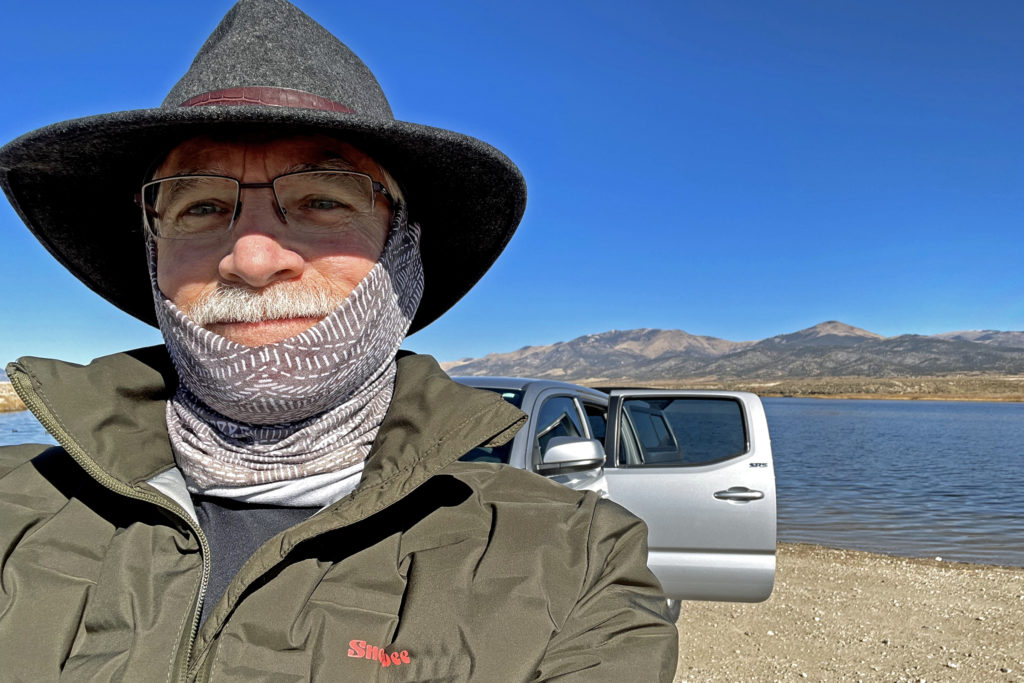
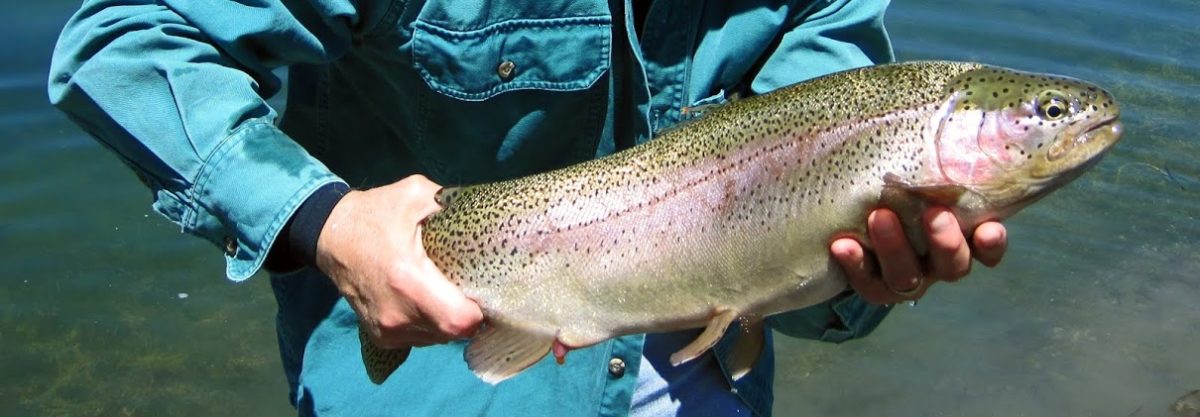
Another terrific adventure, Mark! All worth it when you land a trout like that.
Thanks Nate. It was a nice trip for several reasons.
I see that a “before leaving on a fishing excursion” checklist is in order!! Jim has one for our travels….sometimes he forgets to read it tho……😬
So the hatchery trout get nibbled on by their brethren???? Sounds like the tropical Angel fish that used to get their dorsal fin chomped on by the turtles that were in the tank with them…..they couldn’t keep swimming with that bite mark in the top fin so they listed to starboard, sank & we gave them a marine burial…..flush.
Jeannie, I might need a checklist for the checklist! Actually, when I was a young backpacker I made meticulous lists. I still use lists for overnight camping trips, but not for daytrips. Sometimes it becomes a test of resourcefulness with what you have. Here is an old backpack post that you might enjoy (we made lots of list for that one as we took climbing and fishing gear with us):
https://www.fisherdad.com/1979/07/15/ruby-mountains-elko-nv/
Mark,
Thanks for the entertaining, comforting, and inspirational writing. You always bring me great joy and take me a couple of steps closer to the kingdom of God.
I hope all is well with you, my good brother. Have a happy Thanksgiving and a Merry Christmas.
Randy
Thank you Randy. I’ve been thinking of you. You remain in my prayers for good health and your continuing ministry.
Another nice fisher note, Mark. I got cold just looking at you!
Happy Holidays to you and your family!
Judy Tuttle
Thank you Judy. I hope to wish you a great Holiday personally at the store if our shopping crosses paths again.
You know Mark, sometimes it’s not the fish that we catch (even though that’s reason for fishing), but just being in God’s creation. It’s marveling at his beauty. Sometimes we tend to forget that people tend to worship the creation, instead of the creator. It’s the peace and quiet, the bluebird skies and the simplicity of life that keeps one fishing and enjoying the great outdoors. You see, our creator was an outdoorsman too. A fisherman at heart. Thanks for your posts, I truly enjoy them. I spend a lot of time fishing Angel Lake and it’s so beautiful there. Take care Bro, Fred DiRisio
Fred, your comment is spot on. Recognizing and enjoying our Lord’s creation is a wonderful gift. To quote Bart Millar of Mercy Me, “I can only imagine what heaven will be like,” but I think nature is a small preview of coming events. Fishing and catching fish plays a supporting role compared to His creation.
BTW, the FisherDad sticker on the back window of the FishTaco shell includes the verse from Matthew 4:19.
Blessings to you this Holiday Season!